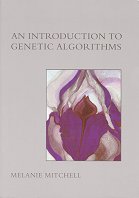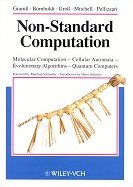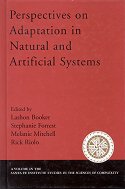There’s never enough computer power for challenging questions.
Problems such as the design of turbines consisting of more than 100 parts
or the simulation of systems of some 50 interacting particles
are far beyond today’s computer capacities.
Or, how to find the shortest phone line connecting 100 given cities?
The most promising answers to such questions come from unconventional technologies.
The massive parallelism of molecular computers or
the ingenious use of quantum systems by universal quantum computers
provide solutions to the dilemma.
Designed to solve specific problems, they show unprecedented performance.
And as for the phone line problem – genetic algorithms mimick
the way nature found its way from the first cells to today’s creatures.
While relying on conventional computer hardware,
they introduce an element of chance on the software level,
thus circumventing the disadvantages of traditional deterministic algorithms.
A textbook for those shaping the future of computing, this volume is also pure fun.
Learn about the physical principles of tomorrow’s technology,
and enjoy a marvellous tour through their potential applications!
This promised to be a very interesting book, but it was let down for me
by being too low level – too much about the scientific and technological
bases, and not enough about any new computational paradigms. (The
very poor level of proof reading, with some chapters thick with spelling
mistakes, also detracts.)
I was hoping for an overview of what new tools are being added to our
computational capability, with maybe a review of the current state of the
art, but what I got was a bunch of essays that have an idiosyncratic
viewpoint, with all the details in the wrong places (for me, at least).
For example, the chapter on Genetic Algorithms devotes hardly any space
to the schemata model (beyond saying it is intuitive) but instead develops
a “statistical mechanics” model, without then providing the
intuition of how this model helps us to cast or solve new computational
problems. It also seems to imply that mutation is the key concept,
with cross-over just an interesting second order add-on (whereas
studies of some genetic algorithms show is that cross-over is key, with
mutation playing a surprisingly small role).
The two chapters on quantum computing range over the theoretical QM
underpinnings, and the current technology, but again provide no intuition
of how these devices work as computers. (And the second of these
chapters has an almost useless bibliography, since it omits the papers’
titles.)
So I was left disappointed.
Contents
- • Heinz Georg Schuster. Introduction to Non-standard Computation. 1998
- • Michael Gross. Molecular Computation. 1998
- Using DNA to solve computational problems can allow massive
parallelism, by exploring 1019 cases in parallel. This
doesn't solve the trouble with exponentially difficult problems -- but
it does delay it by several orders of magnitude! Currently, to program
such a device, one needs to be a good bench chemist -- by DNA-sequencing
technologies might make automatic compilation easier.
Supramolecules are large molecules that are
(partly) built from non-covalent bonds. Natural supramolecules
include DNA; artificial ones also look promising for computational
applications.
- • Stefan Bornholdt. Genetic Algorithms. 1998
- Solving optimisation problems with artificial evolution
- • Melanie Mitchell. Computation in Cellular Automata: A Selected Review. 1998
- A good overview of what cellular automata are, and a clear
description of how higher-level 'particles' can be used to design
cellular automata algorithms. [By far the best chapter. I find cellular
automata intrinsically interesting, but this chapter still left me
wondering what advantages they have as computers.]
- • Tino Gramss. The Theory of Quantum Computation: An Introduction. 1998
- Theoretical quantum mechanic underpinnings of quantum computers -- all Hamiltonians and reversibility
- • Thomas Pellizzari. Quantum Computers: First Steps Towards a Realization. 1998
- Current technology for building (very small!) quantum computers, including error correction





